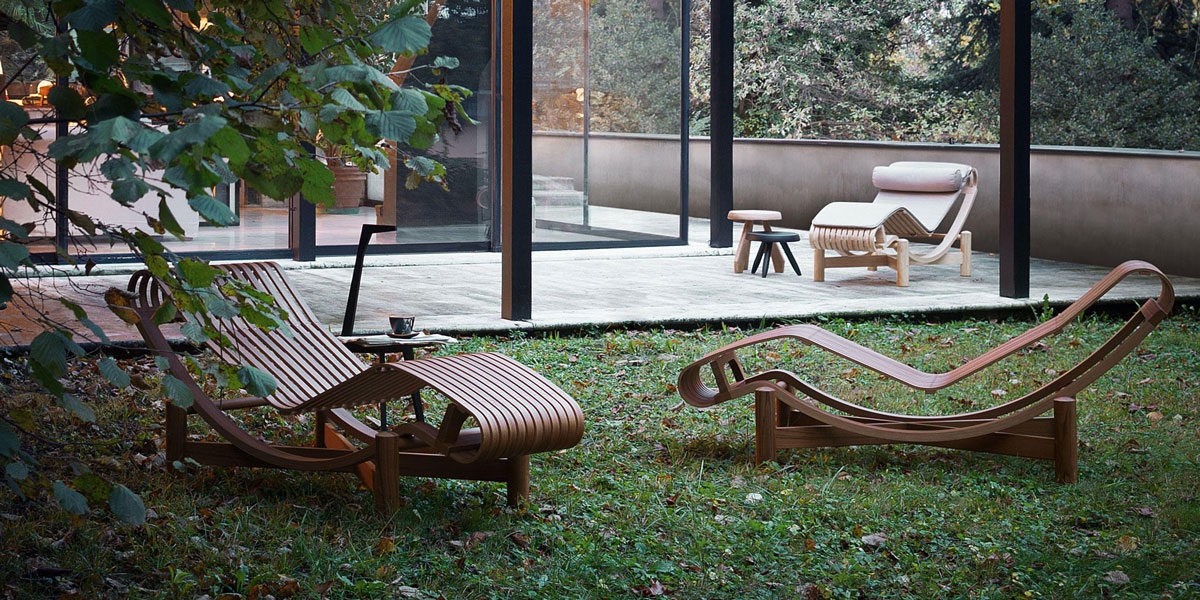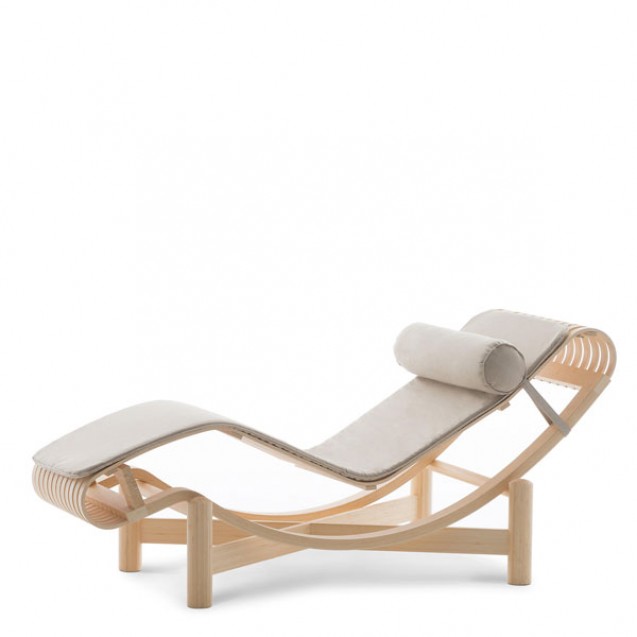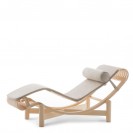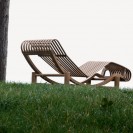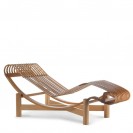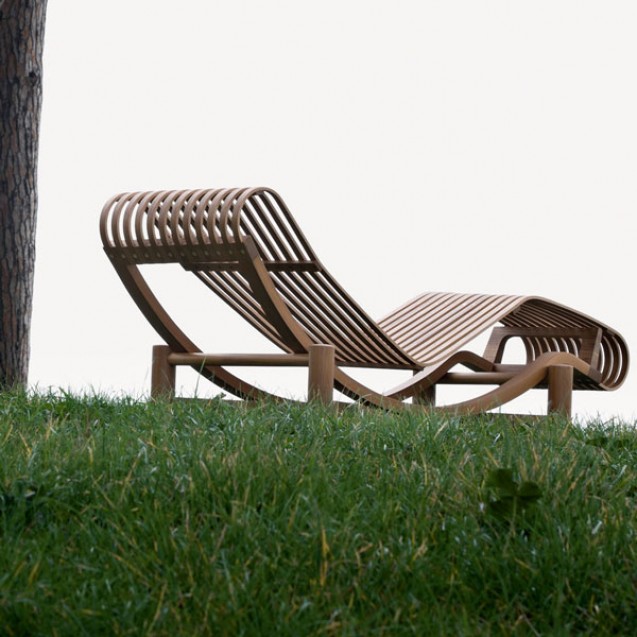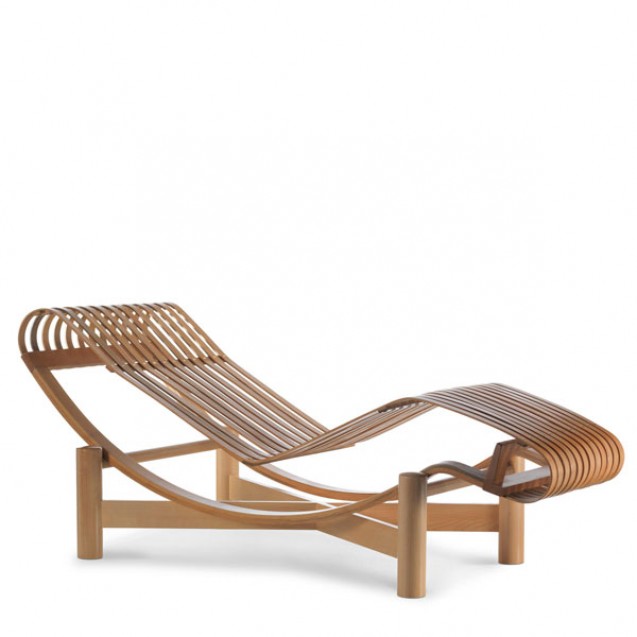522 Tokyo Chaise Longue
It is through this veritable
piece of design history that Cassina expresses its exceptional wood-working
mastery. Designed, but not realised, in 1940, by Charlotte Perriand during her
time in Tokyo, this chair uses bamboo to revisit the famous LC4 chaise-longue.
Its organic form, curvy and inviting, has been re-issued and is now available
in teak, and well as bamboo wood. The seat of this recliner is made of twelve
curved strips of wood while the joining elements are satin-finish brass studs.
Adding mattresses for outdoor use provides dashes of colour to help furnish a
veranda, terrace, or any other kind of outdoor space.
| About Designer | |
|---|---|
Charlotte Perriand |
Charlotte Perriand full membership of that avant-garde
cultural movement which, from the first decades of the twentieth century,
brought about a profound change in aesthetic values and gave birth to a truly
modern sensitivity towards everyday life. In this context, her specific
contribution focuses on interior composition, conceived as creating a new way
of living, still today at the heart of contemporary lifestyle. In the sphere of twentieth century furnishing history,
the advent of modernity made possible the entrepreneurial audacity of this true
reformer of interior design. At the beginning of her professional career she
was acclaimed by critics for her Bar under the roof, exhibited at the Salon d’Automne
in 1927 and constructed entirely in nickel-plated copper and anodized
aluminium. In the same year, when she was just twenty-four years old, she began
a decade-long collaboration with Le Corbusier and Pierre Jeanneret, at the
famous design studios at 35, rue de Sèvres in Paris. Her presence in the Le Corbusier studio is visible in
all the furnishings designed with him and with Pierre Jeanneret: and so
Charlotte Perriand becomes a cornerstone in the reformation project promoted by
the architect, adding a distinct dimension of humaneness to the often cold
rationalism of Le Corbusier. In her creations she manages to animate the
fundamental substance of daily life with new aesthetic values: in particular
her talent and intuition in the discovery and use of new materials manifest
themselves to their full extent. The ten-year long collaboration with Le Corbusier and
Pierre Jeanneret, and her Japanese experience, represent periods of intense
creative effervescence in the life of the artist. During her long stay in the
Far East (‘40-‘46), she reveals her artistic talent to the full, through a
reinterpretation of the reality of life to echo both tradition and modernity.
By way of example, worthy of mention are the furnishings produced using
traditional bamboo processing techniques, capable of enhancing the new forms
already experimented using steel-tubing. After her work as a professional, she concentrates on
a series of original and balanced productions, commissioned by top-level
authorities and leading companies of the calibre of Air France, and by a number
of foreign organizations, authenticating the fame she had by now gained on the
international scene.
The distinguishing factor of Charlotte Perriand’s
personality is a sincere loyalty to the principles of humane and innovative
rationalism, preserved intact in her projects, on which she worked with such
passion, also in readiness for their revival in the “Cassina I Maestri”
collection. |
